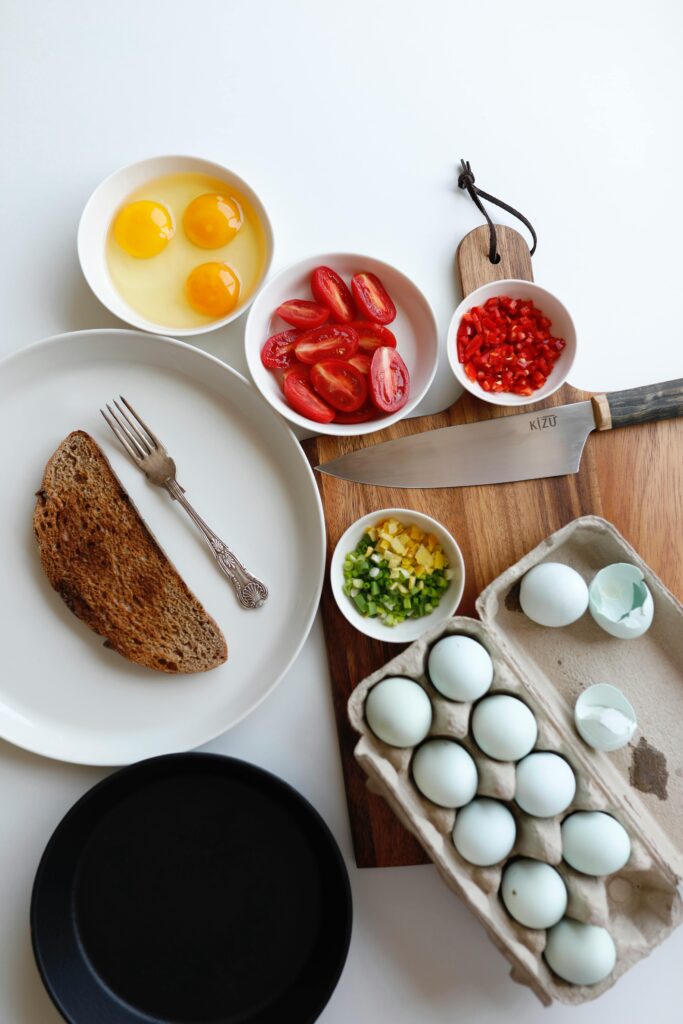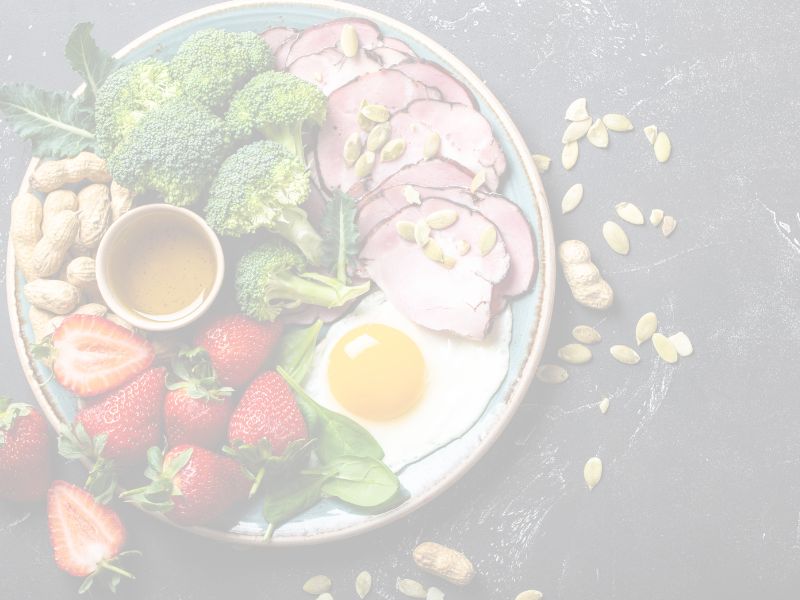Creating a balanced meal doesn’t have to be complicated. With the right approach, you can easily build nutritious and satisfying meals that fuel your body, keep you energised, and support your goals. Whether you’re meal prepping, creating a quick meal, or cooking a nice dinner at home, understanding how to combine protein, carbohydrates, and fats in the right proportions can take the guesswork out of healthy eating.
Why Should You Create Balanced Meals?
Balanced meals provide your body with the essential nutrients it needs to function at its best. A well structured meal helps regulate blood sugar levels, sustain energy throughout the day, and prevent cravings that lead to overeating. When you eat the right combination of macronutrients—protein for muscle repair and satiety, carbohydrates for energy, and healthy fats for hormone regulation and brain function—you support optimal digestion, metabolism, and overall satisfaction.
By practicing building balanced meals, you will set yourself up for long term success while removing the stress and barriers of knowing what you should eat.

How to Build a Balanced Meal
Think about your plate, with each meal you want to include a form of carbohydrate, protein, and healthy fat on it. The steps below show you the simplest way to do so along with examples of each macronutrient. Keep in mind, most food sources will have a combination of 2 or 3 of these nutrients, the food sources listed are examples that contain high amounts of the aforementioned macronutrient.
Step 1: Select a Carbohydrate Source Carbohydrates serve as your primary energy source, don’t be afraid! Choose from the types of carbohydrates below to feel energised and nourished.
- Whole grains (brown rice, barley, whole wheat, oats)
- Starchy vegetables (sweet potatoes, potatoes, corn, squash)
- Legumes (lentils, chickpeas, black beans, kidney beans)
- Fruits (bananas, apples, berries, oranges, mangoes)
Recommended Portion: 1/4 of your plate or about 1/2 to 1 cup
Step 2: Choose a Protein Source Protein serves as the building block for your tissues such as muscle, skin, bone, and cartilage. It also helps you feel fuller for longer!
- Lean meats (chicken breast, turkey, lean beef, pork loin)
- Fish and seafood (salmon, tuna, shrimp, cod)
- Plant-based proteins (tofu, tempeh, edamame, seitan)
- Dairy and eggs (greek yogurt, cottage cheese, eggs)
Recommended Portion: About 1/4 of your plate or a palm-sized portion
Step 3: Incorporate Healthy Fats Healthy fats are necessary for hormone balance and proper nutrient absorption. These also help lower blood cholesterols and triglycerides!
- Nuts and seeds (almonds, walnuts, chia seeds, flaxseeds)
- Healthy oils (olive oil, avocado oil)
- Avocados
- Fatty fish (salmon, sardines, anchovies, tuna)
Recommended Portion: 1-2 tablespoons of oils, 1/4 avocado, or a small handful of nuts/seeds.
Step 4: Add Vegetables for Fibre and Nutrients Vegetables provide fibre, vitamins, minerals, antioxidants, and phytochemicals- all must-haves in a healthy diet!
- Leafy greens (spinach, kale, chard)
- Cruciferous vegetables (broccoli, cauliflower, Brussels sprouts)
- Other colorful vegetables (peppers, carrots, zucchini, tomatoes, cucumbers)
Recommended Portion: At least 1/2 of your plate.
Step 5: Enhance With Seasoning You could use all of the same ingredients above, but change the seasonings to create a whole new meal experience!
- Herbs and spices (garlic, basil, oregano, cumin, turmeric)
- Sauces (soy sauce, hot sauce, mustard, salsa)
- Citrus juice (lemon, lime)

Example Meal Combinations
Try some of these simple combinations, then vary them to fit your desired taste. You don’t need to spend a long time in the kitchen in order to make a delicious and well balanced meal!
- Grilled Chicken + Quinoa + Avocado + Spinach + Lemon Dressing
- Baked Salmon + Sweet Potato + Olive Oil + Roasted Broccoli
- Scrambled Eggs + Whole Wheat Toast + Almond Butter + Berries
- Tofu Stir-Fry + Brown Rice + Sesame Oil + Mixed Vegetables
- Lean Beef + Pasta + Olive Oil + Zucchini + Tomato Sauce
- Grilled Prawns + Brown Rice + Avocado + Cucumber + Lime Dressing
- Meatballs + Quinoa + Roasted Peppers + Feta Cheese
- Lentil Soup + Whole Grain Bread + Side Salad with Olive Oil Dressing
- Omelet with Spinach + Mushrooms + Whole Wheat Toast + Chia Seeds
- Baked Cod + Roasted Potatoes + Baked Asparagus with Garlic
Balanced meals are all about understanding macronutrients, stick to this structure to simplify meal planning and maintain a nutritious diet. Once you form a solid foundation, the possibilities are endless!
Happy meal planning!
